Salutations! This is the first steampunk outfit I've put together in quite some time. (The last one was my steampunk inspired lolita oufit back in 2011!) I am a steampunk fan, so it would probably come as no surprise that everything in this outfit excluding the corset came straight out of my own closet. Hahaha
This was my final project for corsetry and the second corset I've ever made! This is also the first time a draped a pattern. I debuted this outfit at CostumeCon 32 and won a Hall Award for the ensemble. Planning on decking this out with more stuff in the future--like a weapon or possibly some gloves. But for now it's complete.
This was my final project for corsetry and the second corset I've ever made! This is also the first time a draped a pattern. I debuted this outfit at CostumeCon 32 and won a Hall Award for the ensemble. Planning on decking this out with more stuff in the future--like a weapon or possibly some gloves. But for now it's complete.
Special thanks to Mike at EleventhPhotograph for the photoshoot! I have a few more pics up on my Cospix profile!
It is a decorative corset intended to be fairly tight-laced (at least for me!) I am particularly proud of how the back of this piece turned out. In terms of comfort, it's actually fairly comfortable when standing, but when sitting the neckpiece doesn't allow me to lean back. This makes it a bit tiring to wear for long periods of time.
I had a hell of a time figuring out my colour scheme (as I almost exclusively design in pencil, without colour), but I am glad for the colours I eventually chose. Special thanks to the lovely gal at King Textiles who helped me pick out my fabrics! I like the contrast with the muted gold and the pale orange versus the brown suede. Mostly I really like fabric with texture. The dupioni (gold) and the raw silk (orange) have such great texture! Someone commented that the raw silk looks almost like woodgrain.
I had a hell of a time figuring out my colour scheme (as I almost exclusively design in pencil, without colour), but I am glad for the colours I eventually chose. Special thanks to the lovely gal at King Textiles who helped me pick out my fabrics! I like the contrast with the muted gold and the pale orange versus the brown suede. Mostly I really like fabric with texture. The dupioni (gold) and the raw silk (orange) have such great texture! Someone commented that the raw silk looks almost like woodgrain.
 Here is my original concept sketch. I started my design process by sifting through the hundreds of google images of steampunk, corsets, and victorian fashion. I picked out the different elements I liked and came up with this. It is designed to be worn with or without the neck piece. In the original concept I had vertical buckles attaching the two at the back, but scrapped that during the build process, as I found them to be completely unnecessary; it would make it harder to get on and off by myself, and would clutter the design. I might add the chain detail at the front eventually, but I kind of like it without it.
Here is my original concept sketch. I started my design process by sifting through the hundreds of google images of steampunk, corsets, and victorian fashion. I picked out the different elements I liked and came up with this. It is designed to be worn with or without the neck piece. In the original concept I had vertical buckles attaching the two at the back, but scrapped that during the build process, as I found them to be completely unnecessary; it would make it harder to get on and off by myself, and would clutter the design. I might add the chain detail at the front eventually, but I kind of like it without it.  Then using muslin I draped the design. Each section/piece is a different piece of fabric carefully smoothed to contour the body and pinned in place to the edges of the section. Then I took a ballpoint pen and traced the seam lines/edges onto each piece. I also marked the waistline. Additionally, when draping a corset it is best to keep the grain of the fabric perpendicular to the waist line, meaning the grain should run straight up and down the body. (Woven fabric stretches on bias/45 degree and can alter the shapes enough to be a problem later in the process.)
Then using muslin I draped the design. Each section/piece is a different piece of fabric carefully smoothed to contour the body and pinned in place to the edges of the section. Then I took a ballpoint pen and traced the seam lines/edges onto each piece. I also marked the waistline. Additionally, when draping a corset it is best to keep the grain of the fabric perpendicular to the waist line, meaning the grain should run straight up and down the body. (Woven fabric stretches on bias/45 degree and can alter the shapes enough to be a problem later in the process.) I unpinned the pieces from Molly and cut them out following the outline I had drawn. The two patterns were as follows: The neckpiece pictured above, and the corset pictured on the left. The corset has 6 panels on each side.
I then made a quick mockup to ensure the fit was correct. The neck piece needed some minor adjustments because my neck is thinner than Molly's. An average corset is designed to have a 2" gap at the back, so that when laced it cinches in the body. This obviously doesn't work on the mannequin, so after draping the pattern you then calculate and carve off the proportional amount from each panel. (This was not done to the neck piece because cinching in the neck would cause strangulation.) I made my corset just a fraction narrower at the waist, shaving off the same amount from each panel. This would bring the waist in tighter when tight-laced, giving the waist more definition. After doing this you may have to readjust the seams a little bit so the sides are the same length.
I used the leftover black coutil from my Black Corset, Beetle Green Trim to be the inner 2 layers of my corset (making this corset have 3 layers total). The silks I used as my outer "fashion layer" would be too thin to hold the bones without eventually fraying, also would not stand up to tight-lacing very well. I needed 4 of each of the 6 pattern pieces to make my inner layers. For the neckpiece I did the double inner layers in black twill instead, this would be less constricting and allow more motion (as twill is much less stiff that coutil), while still maintaining the desired structural stability.
I gave myself 1" seam allowance at the top and bottom of each piece, and 1/2" at the side seams.
I then cut out the pieces in the appropriate colours of silk. The center front and center back were done in the orange, while the rest was done in gold.When it came to the neckpiece I did my best to just ensure the grainline was perpendicular to the neck. This meant I got some interesting diagonals on the shoulder/back.
For this corset I used 2 enamel bones for the center back and spiral bones for the rest. Overall there was 10+ meters of boning. The enamel bones don't bend sideways, which is why they are used in the center back, this keeps the lacing more straight/aligned than spirals which are bendy in all directions.
Next I added in the busk to the center panel. You can find out how I did that by reading my Busk Closure Tutorial. Don't worry, you can come back to this. Hahaha
 I basted all the layers for each panel together, following my seam lines, and serged the edges (excluding the center back, which was bagged out, pressed and top stitched first). This would prevent fraying while I worked as well as keep the layers from shifting. Then I prepped all the bone casings. For the internal bones (the ones next to each side seam) I drew out my lines carefully on the fabric and then machine stitched them. For the external suede cases I cut and measured the strips, then top stitched them on with the raw edges folded under.
I basted all the layers for each panel together, following my seam lines, and serged the edges (excluding the center back, which was bagged out, pressed and top stitched first). This would prevent fraying while I worked as well as keep the layers from shifting. Then I prepped all the bone casings. For the internal bones (the ones next to each side seam) I drew out my lines carefully on the fabric and then machine stitched them. For the external suede cases I cut and measured the strips, then top stitched them on with the raw edges folded under.
I sewed the side seams on every piece except the center front and back. I made sure to carefully line up my basting stitches and edges and waistline. I didn't want to overshoot into my bone casings anywhere. The most important thing here is patience and accuracy. It will make for a cleanly finished corset.
Next I top stitched the suede strip that would mask the colour transition (orange to gold) on the center front and center back panels. This was to make the transition look less jarring. On the neckpiece this suede strip was sewn into the seam, because the layers were thin enough. On the corset though, this would be impossible because the 4 layers of coutil, plus 2 layers of silk AND a suede layer would be too much for just about any sewing machine. So instead I left it flapping while I sewed each of those seams, then I carefully folded it over and top stitched it in the ditch so the machine wouldn't have to go through the seam allowance also. To say this was challenging is an understatement. Haha
 Once the pieces were all together it was time to prep and insert the bones. This process actually took quite some time. It is easiest to cut, tip and insert each bone before moving on to the next, otherwise you are likely to get them mixed up. As a general rule you should cut the bones to be 3/4" shorter than the finished case, this allows a little more room for them to bend so they wont bust out of the casings when you try to sit. (Trust me, sitting is by no means overrated!)
Once the pieces were all together it was time to prep and insert the bones. This process actually took quite some time. It is easiest to cut, tip and insert each bone before moving on to the next, otherwise you are likely to get them mixed up. As a general rule you should cut the bones to be 3/4" shorter than the finished case, this allows a little more room for them to bend so they wont bust out of the casings when you try to sit. (Trust me, sitting is by no means overrated!)In terms of cutting spiral bones, I highly recommend investing in a pair of aircraft cable cutters, which you can pick up at most hardware stores (though the salespeople are likely to be confused as to your intended use of that tool...). They are the best thing to cut through the bones, normal wire cutters just don't work very well (it can be done, it's just a lot of effort). They cost around 20$ though, so if you are planning on making multiple corsets it's a good investment, if not you may want to look into pre-cut bones (which are more expensive than buying a roll of boning). Figure out what works best for your budget/your project!
At this time I also pressed the inner seams open & flat, then cross stitched them down, this reduces bulk on the inside and makes it more comfortable to wear (because the seams wont get folded over weirdly when you put it on and be uncomfortable).
The grommets I put in using the grommet press I have access to at school. It makes it much easier I had a record breaking zero failed grommets! (Not planning on buying my own press though for reasons of expense.)
The last thing I added (besides the laces) was a buckle under the left arm. Again I picked a buckle with metal that matched the colour of my busk and grommets.
I'm sure I will be wearing this to many more events!




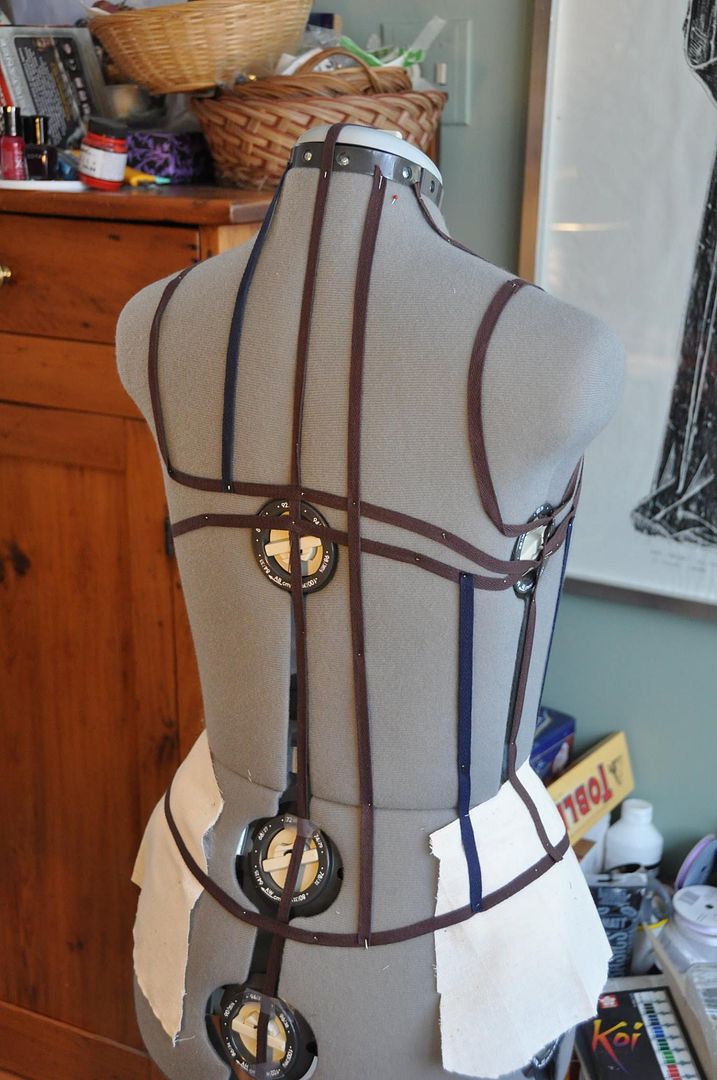



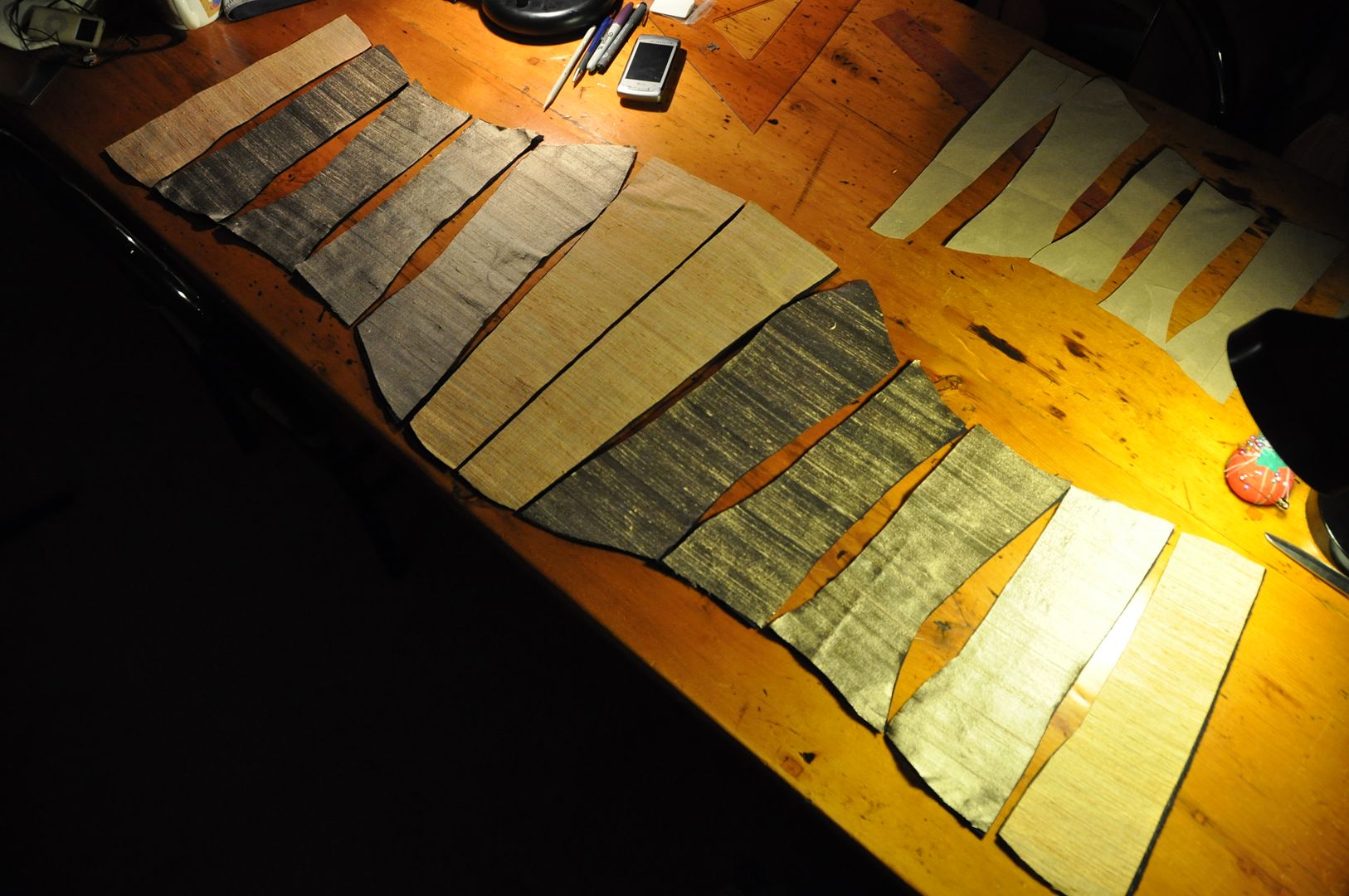


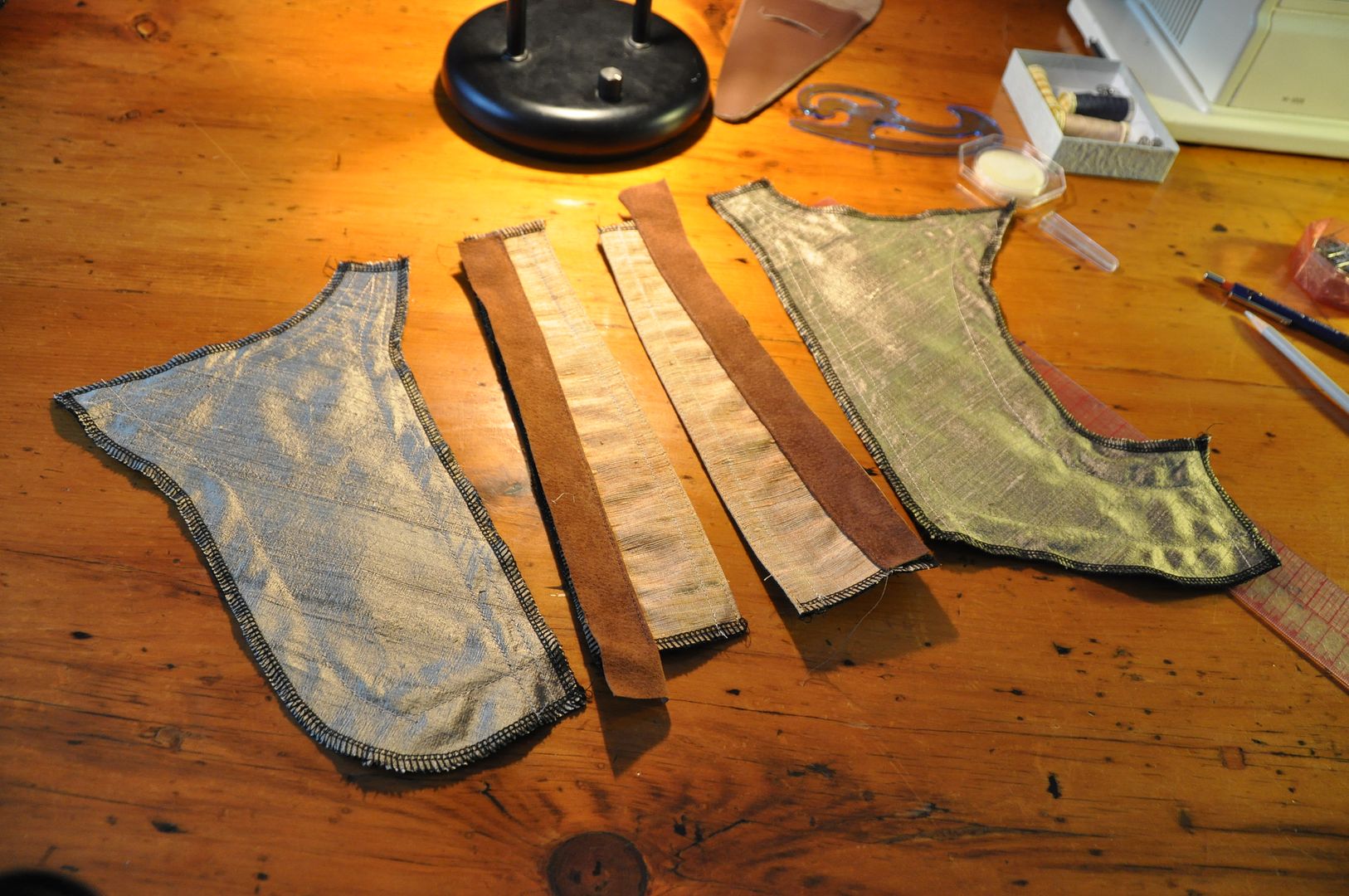


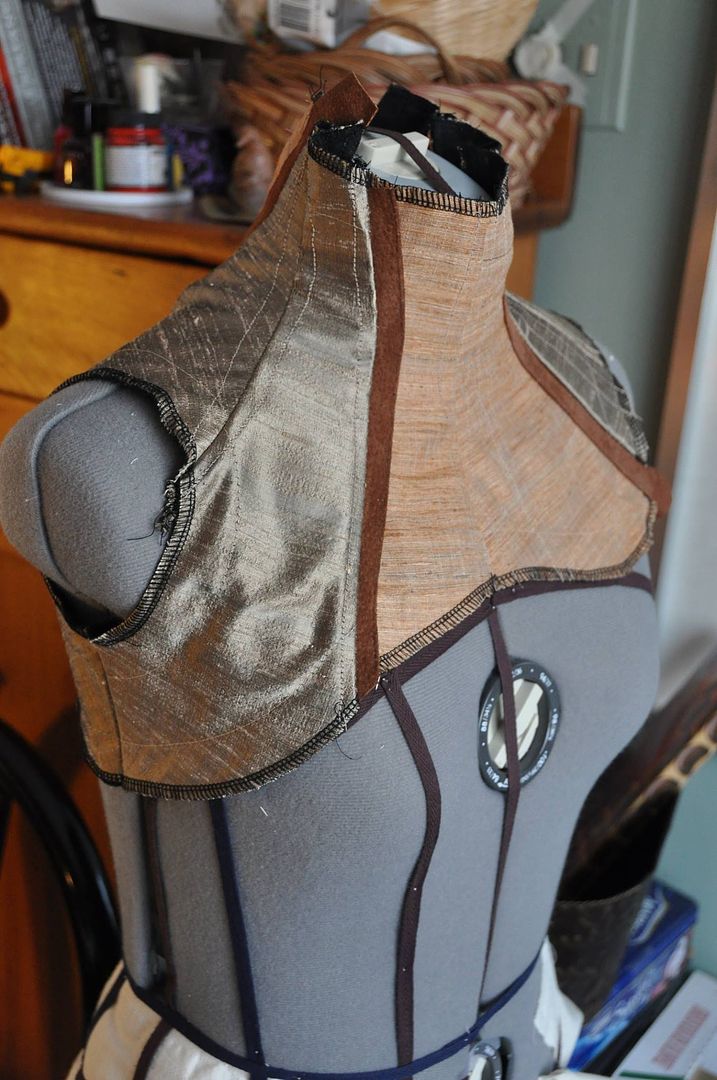



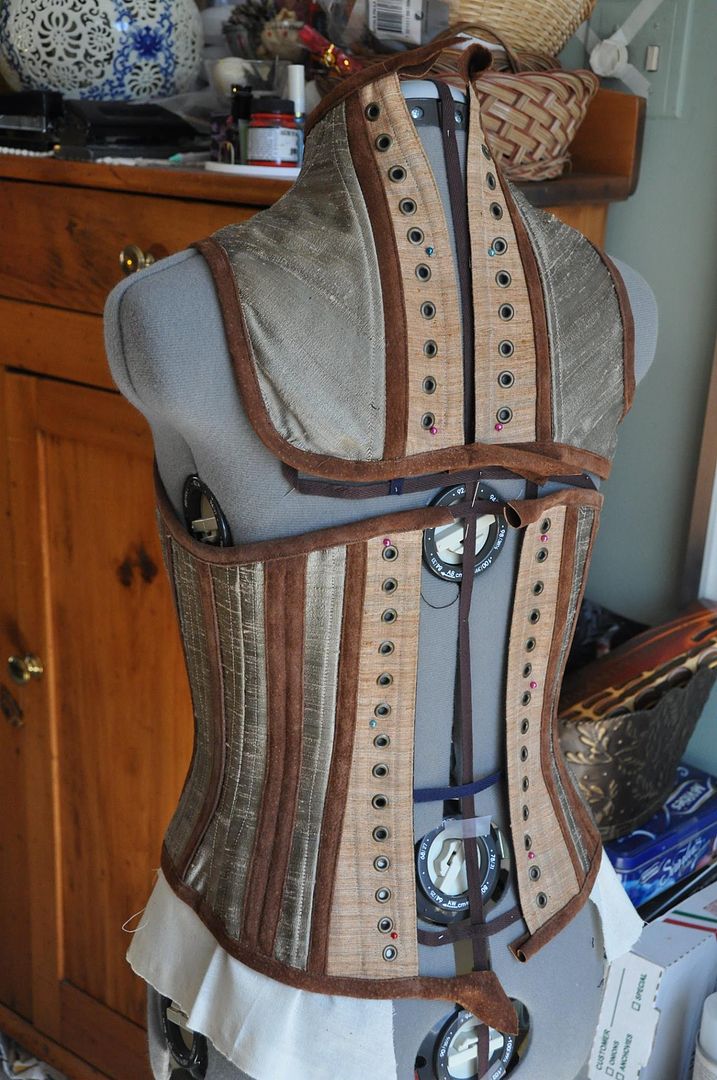
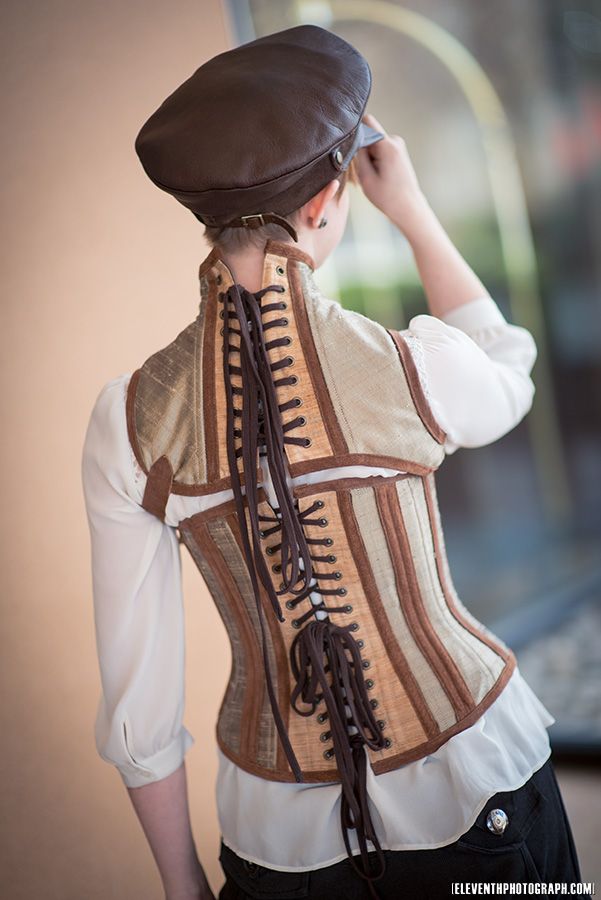
No comments:
Post a Comment